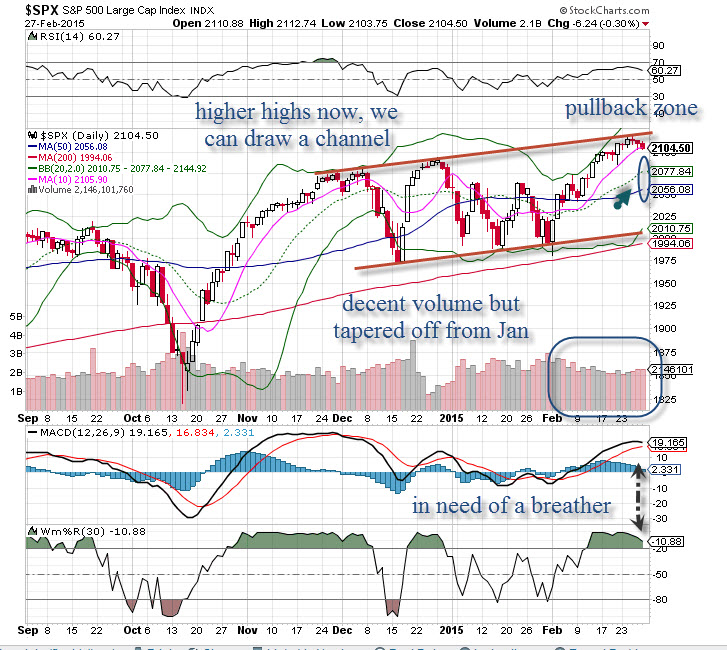I often find myself hearing reasons or rationale for the stock market’s movements, which really is just a collection of emotions all packaged together to form a result. I have to ignore these comments. If I listen too carefully, I might get swept up trying to rationalize the action. Without trying to be too obvious, too much fear and the market goes down, but, too much optimism, and the market goes higher. We can see all of this played out on a chart too. I’ve said many times, a technical chart is fear/greed displayed in graphic form.
Yet, the chart shows us a complete view of history. These are data, factual representations, and patterns, but they are also open to interpretation. The thought here is: interpreting the chart of human behavior (which never changes) could give us a clue as to the next move. It is the hard right edge of the chart to which we look to establish where price is going. This is no guarantee, but it is a great guide.
I bring this topic to you, as we are at new all-time highs in the SPX 500, Dow Industrials, and Russell 2000, and we are nearing some multi-year milestones for the NASDAQ, as well. Many have missed all or parts of these moves, and that can be frustrating, as they know that time or opportunity will never be back.
Many players are twisted and find themselves either under-invested or out of the game entirely, preferring a market pullback to an appropriate buy point – because they have wait for it, right? Patience is a virtue and pullbacks are indeed opportunities, but to make a judgment can be misleading.
But we should all know the market is not that accommodating, preferring to make most everyone look foolish in their tactics. Is that how you are feeling if you’ve missed the boat this year? Last year? Since Jan 2012 when the markets really started to fly?
So, as we contemplate what we should be doing, and as you look at the chart below and hopefully view it with an open mind, understand that we cannot dictate the current or future behavior of the markets. Being a long-time market veteran, I have failed on just about every prediction I have ever tried to make, save for the ones that are open-ended (read: a broken clock is right twice a day).

Those predicting or looking for a market drop or dive for this or that reason will find themselves waiting for something that won’t likely happen in their time frame, which then creates frustration and angst, which can lead to an irrational move into the market when the timing could not be any worse. You see where I’m going here?
Success in trading and investing is not about predicting conditions; rather it is about interpreting market behavior and learning to accept that it won’t likely change (markets go up/down with greed/fear), and using sentiment tools give us a leg up to discovering moments where turns are likely, regardless of our biases. I will discuss how to use sentiment and the othere tools over the next couple of weeks.
#####
For more from Bob Lang, click here.




